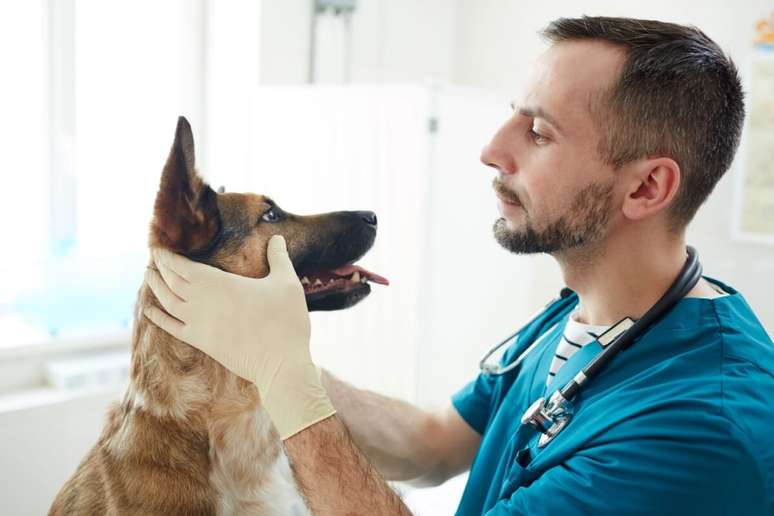This eye condition often affects animals’ vision as they age.
Dogs are one of the most popular and beloved choices for pets around the world and complement people’s hearts with their unwavering loyalty, companionship and versatility. Furthermore, they can easily adapt to different lifestyles, from small apartments to large expanses of countryside.
However, none of this would be possible without the constant evolution of veterinary medicine, which is essential to ensuring a longer and healthier life for these precious family members. However, despite all the benefits resulting from medical advances, dogs still face challenges related to aging.
A common example is cataracts, an eye condition that can affect dogs’ vision they grow old. “Cataracts consist of the loss of transparency of the lens which, by preventing the passage of light, significantly compromises vision and, if left untreated, can progress to total blindness”, explains Laura Paolucci, veterinarian at ViZoo, to boot which offers technologies, products and practices to preserve, treat and recover sight pets.
Types of Cataracts in Dogs
As the specialist explains, the most common form of cataract that usually affects the pets it is the juvenile primary, which affects dogs up to 6 years of age. “The second most common cause in dogs is cataracts resulting from diabetes mellitus. In the latter case, the progression of the disease is rapid and always affects both eyes,” warns the veterinarian.
In any case it is essential that the owner is always vigilant and visits the vet regularly. “Because dogs cannot express themselves when the disease begins to develop, it is essential that owners take their pets for an annual ophthalmological examination and pay attention to signs of the disease,” recommends Laura Paolucci.
Symptoms of cataracts
It is vital that owners are aware of the signs and symptoms of cataracts in their pets. dogs, as this condition can have a significant impact on the animal’s quality of life. According to Laura Paolucci some of the most common signs are:
- Changes in behavior, such as bumping into objects and furniture;
- Tripping on sidewalk steps while walking;
- Stop running to get toys;
- Don’t climb on furniture anymore;
- Having difficulty going down or up stairs;
- Becoming more silent, anxious, or aggressive;
- Make your eyes whiter.
“As the cataract progresses, the dog may become increasingly quiet, disoriented, have difficulty interacting with other animals in the home, lose his appetite and develop other eye problems, such as uveitis, dislocated lenses and glaucoma. Cataracts have a negative and direct impact on the animal’s quality of life”, adds the veterinarian.

Breeds that are more likely to develop the disease
Primary cataracts are more common in some dog breeds than others. This is due to genetic predispositions that make them more susceptible to developing this condition. According to the vet, it can affect breeds such as poodles, cocker spaniels, schnauzers and Yorkshire terriers, even as puppies.
“In cases where the cataract is of primary origin, the Clinical signs they can be subtle and go unnoticed by owners, which is why annual monitoring is important for dogs up to 6 years of age and every six months for dogs over 6 years of age, with a veterinary ophthalmologist,” he emphasizes.
Treatment of cataracts in dogs
Just like in humans, cataracts in dogs can also be cured, thus offering hope of improving cataracts. life quality and preserve the sight of affected animals. “Surgery is the only way to treat cataracts. Today in veterinary medicine the same technique as in human ophthalmology is used: phacoemulcification”, explains Laura Paolucci.
According to her, this technique consists of removing the opaque lens from the eye and replacing it with an artificial one – exclusive to dogs and adaptable to different eye sizes -, thus restoring sight. “The patient is discharged the same day and his vision is restored after the operation. Even if it is an operation with a high success rate, between 85 and 95%, it is important to remember that the result is linked even at the cataract stage and the care of the brace in the post-operative period”, he concludes.
Source: Terra
Ben Stock is a lifestyle journalist and author at Gossipify. He writes about topics such as health, wellness, travel, food and home decor. He provides practical advice and inspiration to improve well-being, keeps readers up to date with latest lifestyle news and trends, known for his engaging writing style, in-depth analysis and unique perspectives.








